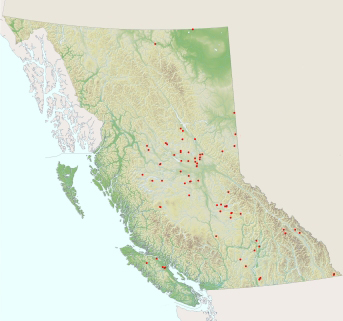The scientific name comes from two Greek words: soma, meaning “body”, and khloros, meaning “green”. The English name refers to the yellow or white markings on the sides of the metallic green or bronzy thorax, but most of the distinctly striped species live in eastern North America; western species have spots, short bars or no marks at all. They all have brilliant green eyes. Most North American species are boreal and Appalachian; 13 of 26 occur in our region. Most live around northern or mountain lakes and peatlands.
Species can be hard to identify, especially the females. Look for pale marks on the side of the thorax and white rings between the segments of the abdomen. Hudsonian, Ringed and Lake emeralds have narrow, white abdominal rings. Examine the shapes of the male’s upper appendages and the female’s vulvar lamina. And look for a brown spot at the base of the hindwings – not the membranule, which can also be dark, but an additional spot (Delicate, Muskeg and Whitehouse’s emeralds have it).
|
|
